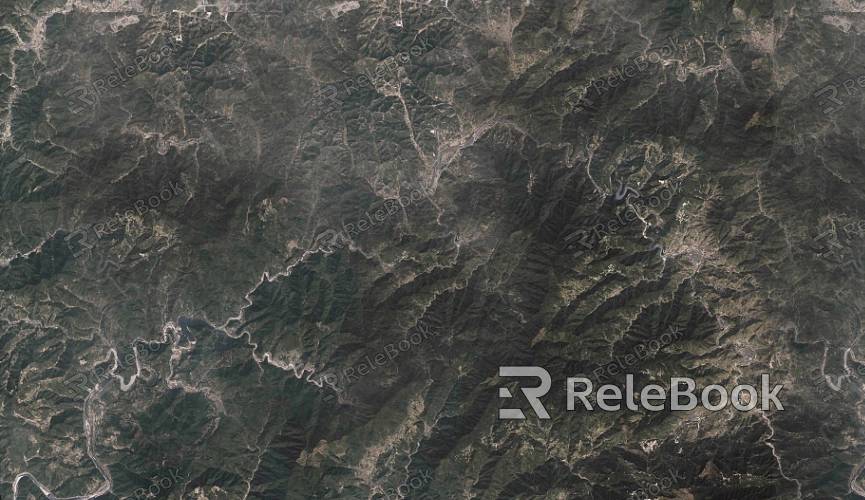How to Export 3D Textures from 3D Builder
Textures are key elements in enhancing the realism and detail of 3D models. However, exporting textures correctly from 3D software, especially from simpler tools like 3D Builder, can be a challenge for designers. 3D Builder is a 3D modeling software from Microsoft, aimed at beginners and intermediate designers, allowing users to design, edit, and export 3D models. However, many designers find themselves confused when exporting models and textures for further rendering or use, particularly when it comes to texture exportation. In this article, I’ll walk you through the steps to export 3D textures from 3D Builder and help you handle texture maps more effectively for your projects.

1. Understand the Basic Functions and Limitations of 3D Builder
First, it’s important to understand the basic capabilities and texture export processes of 3D Builder. While 3D Builder provides a set of easy-to-use 3D modeling tools, it lacks the advanced texture export features found in more professional software like Blender or Maya. The primary advantage of 3D Builder is its user-friendliness and compatibility with Windows, but its texture support and export functionality are relatively basic.
Supported File Formats: 3D Builder allows users to export common 3D file formats such as .obj and .stl. These formats support the embedding and exporting of textures, but they don't offer the same level of texture control as professional software.
Texture Mapping: While 3D Builder allows you to apply textures to models, its ability to handle complex texture mapping or high-precision UV unwrapping is limited.
2. Adding Textures to Your Model in 3D Builder
Before exporting 3D textures, you first need to ensure that your model has textures correctly applied. Although 3D Builder doesn't offer complex texture editing capabilities like Blender, it still allows you to add simple textures to your models.
Importing Textures: Start by making sure you have prepared the appropriate texture files for your model (e.g., .jpg, .png). In 3D Builder, click on the "Textures" option and choose "Add Texture," then import the texture file you prepared.
Adjusting Texture Placement: Although 3D Builder does not support complex UV mapping adjustments, you can still adjust the texture's display by scaling, rotating, and positioning it. For more detailed texture adjustments, you may need to use other 3D software for post-processing.
3. Steps to Export 3D Textures
Once you’ve applied the textures and made the necessary adjustments, the next step is to export the model and its textures for use in other software or rendering purposes.
Choose the File Format: In 3D Builder, click on the "File" menu and select "Save As." In the save dialog that appears, you can choose between formats like .obj or .stl. It’s recommended to choose .obj, as it supports texture embedding.
Embed the Textures: Before exporting, make sure the "Embed Textures" option is selected. This is a crucial step because it ensures the texture files are saved along with the 3D model, and they can be correctly read in other software.
Check the Texture Files: When you export, 3D Builder will save the texture files in a folder alongside the model. If you choose the .obj format, the material and texture information will usually be saved in an .mtl file. Ensure that both the .obj and .mtl files are saved together and that their file paths remain relative to each other to avoid losing the texture.

4. Post-Processing and Texture Optimization
After exporting the 3D model and textures, you can use other more powerful software to further process and enhance the textures' quality and rendering effects.
Use Texture Editing Tools: After importing the model into Blender, Maya, or other programs, you can further optimize the texture display. If you need to adjust the resolution, color, or details of the textures, consider using professional software like Substance Painter or Photoshop for texture editing.
UV Unwrapping: For more precise texture mapping, you can perform UV unwrapping in other 3D software to ensure the texture unfolds correctly across the model’s surface without stretching or distortion.
Texture Optimization: During rendering, it’s essential to choose an appropriate texture resolution to avoid performance issues due to overly large textures. Also, adjusting the roughness, glossiness, and other properties of the textures can enhance the material’s realism.
5. Boost Efficiency with Texture Libraries
If you find yourself lacking time or resources for creating textures, you can consider using pre-made, high-quality texture libraries. Platforms like Relebook offer a wide selection of professional texture assets that can save designers time and effort.
Relebook Texture Platform: Relebook provides a rich collection of textures that you can download and apply directly to your projects. Using these ready-made assets can significantly speed up your workflow and improve the quality of your work. Visit Relebook Textures for easy access to high-quality texture materials.
6. Explore More Export Tools and Plugins
While the texture export features in 3D Builder are relatively basic, there are additional plugins or external tools that can help you achieve more professional texture exportation.
External Tools: Software like Blender, Substance Painter, and others offer more advanced texture export features, enabling you to achieve more precise texture mapping and export results.
Plugin Support: For workflows that require more efficiency, using specific plugins can help streamline the texture export process, especially when dealing with large-scale texture processing or fine-tuning details.
By following the steps outlined above, you can successfully export 3D textures from 3D Builder and refine them further in other 3D software. This not only improves the detail and realism of your models but also enhances the quality of your portfolio. If you're looking for high-quality texture resources, platforms like Relebook offer an array of options to help you complete your projects more easily and improve the visual impact of your work.

